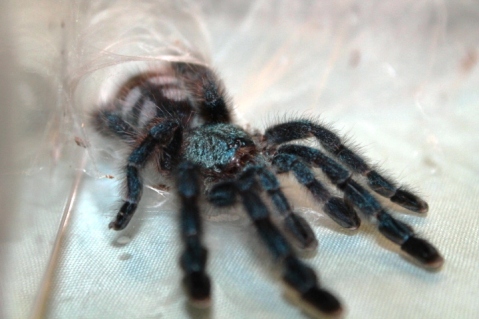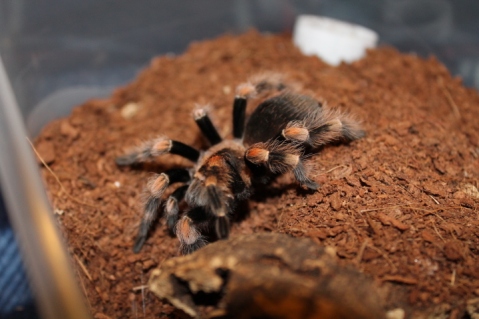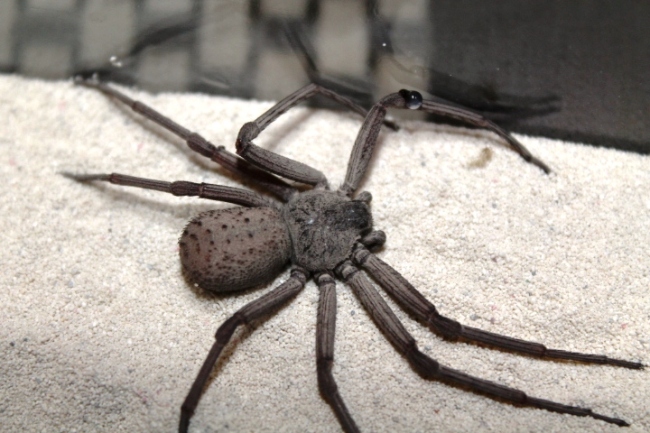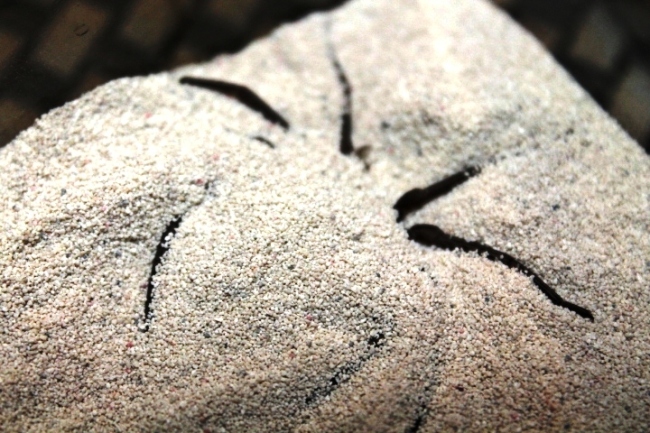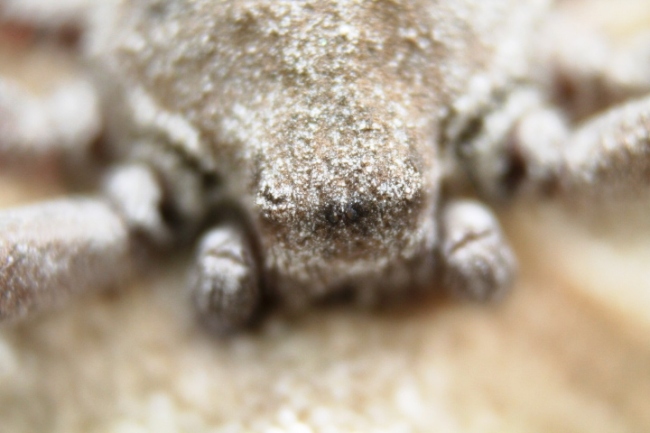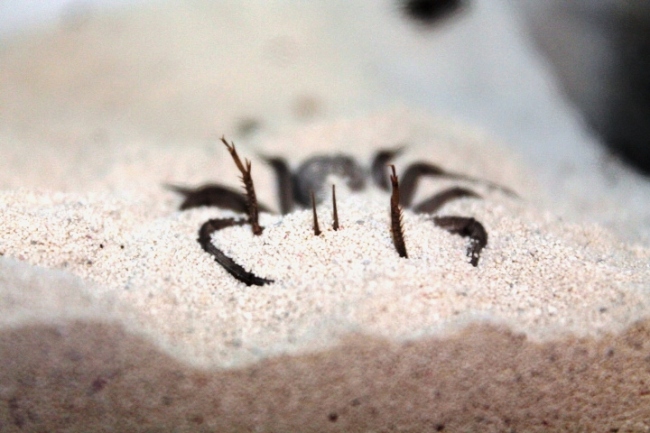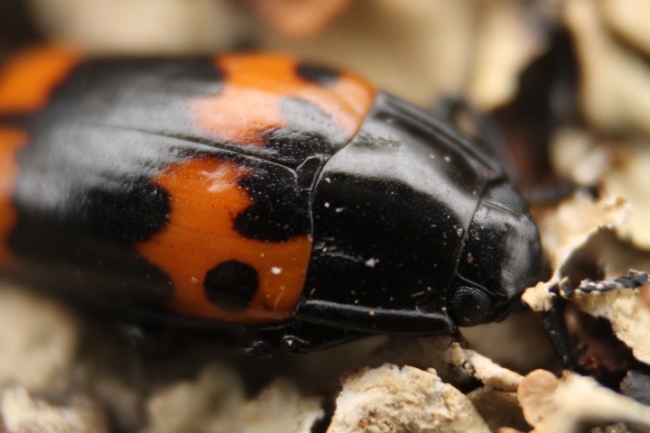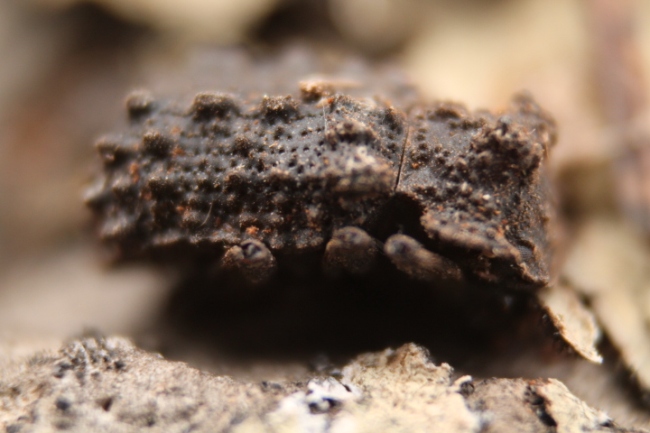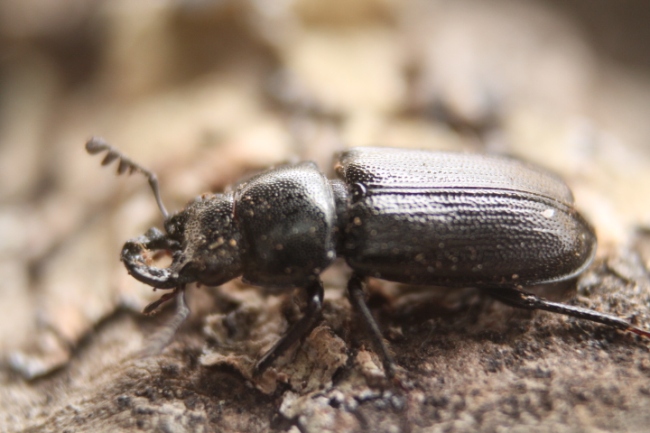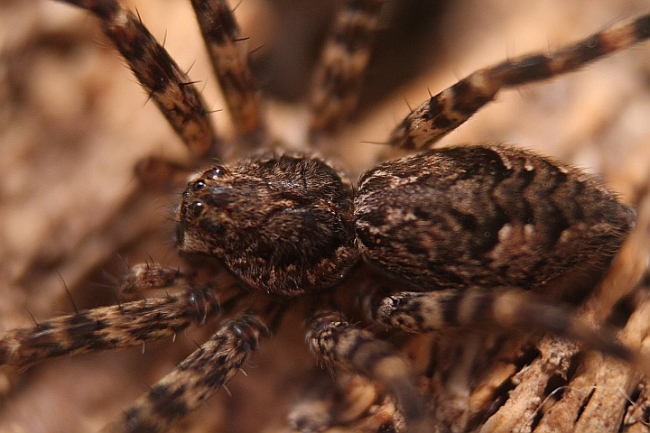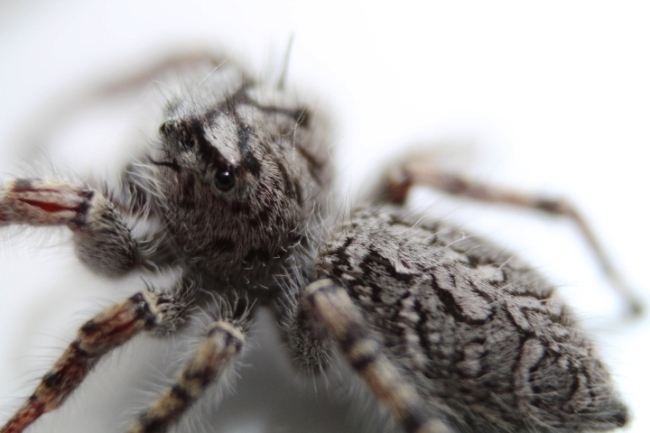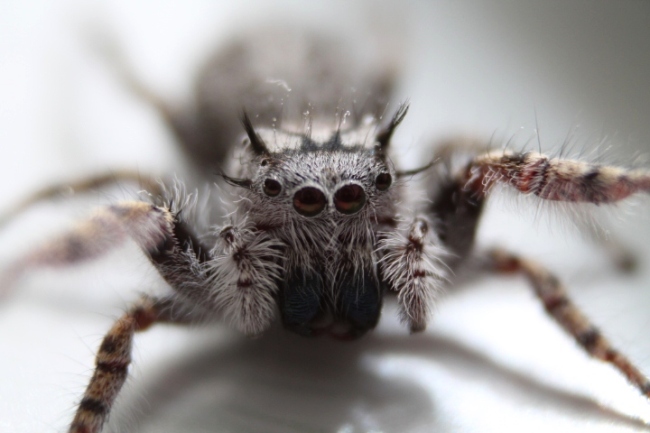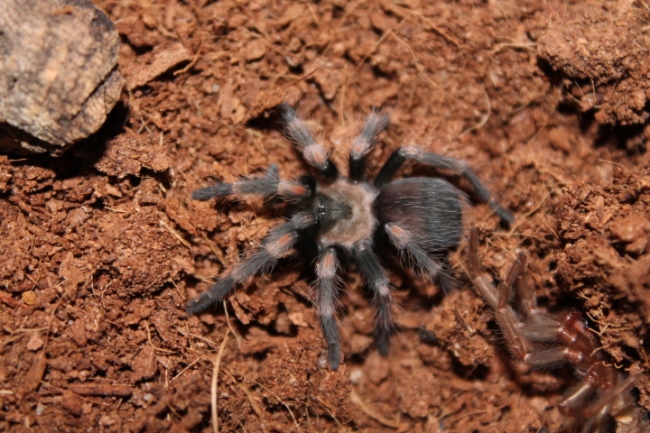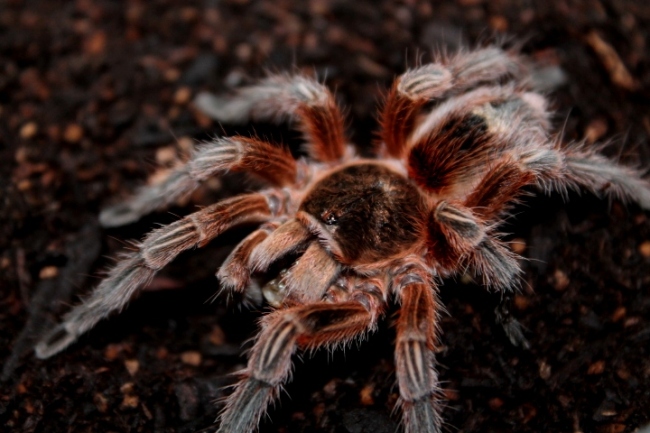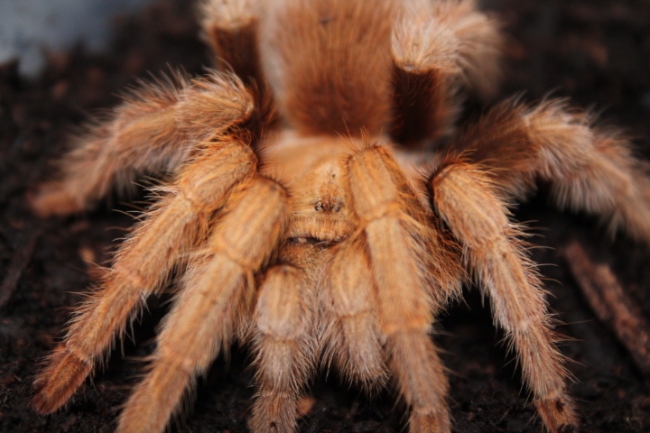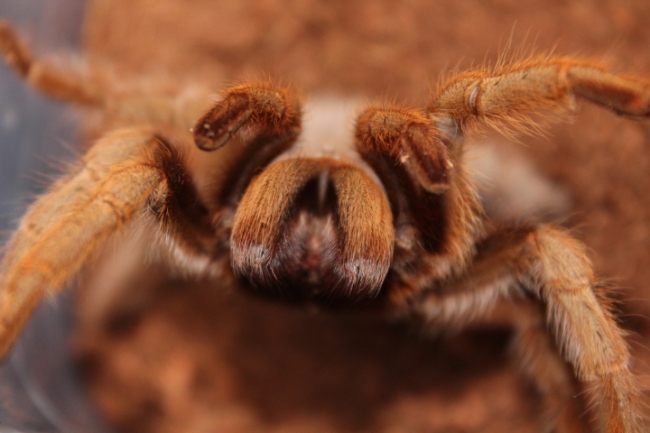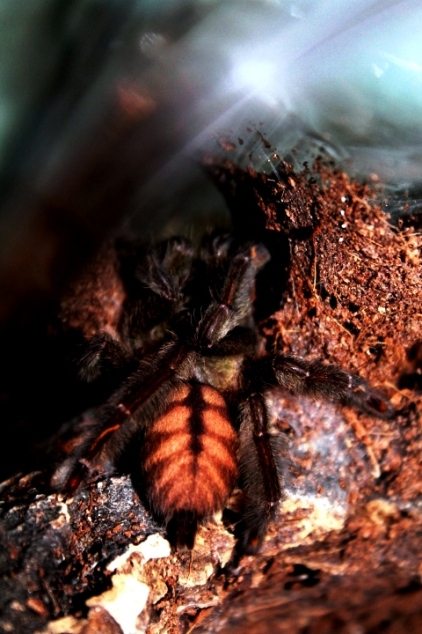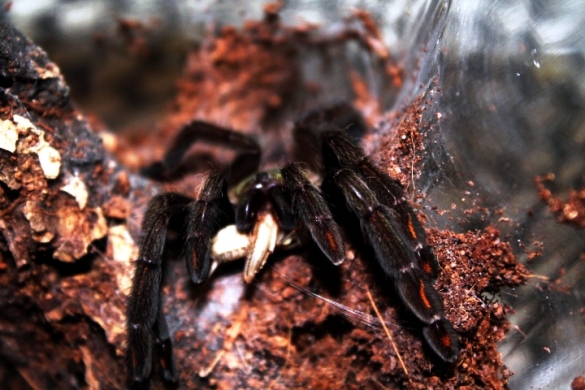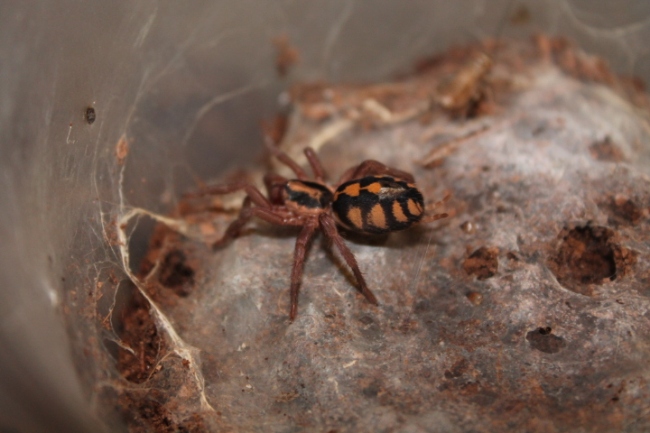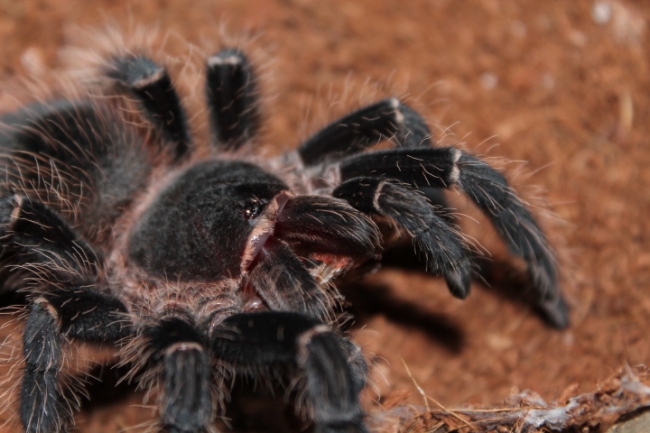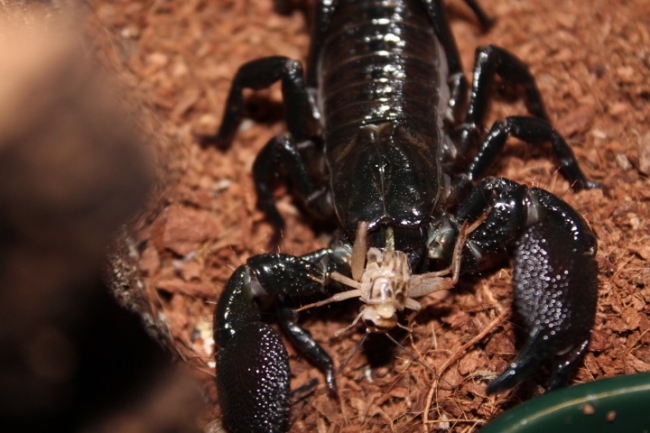Keeping Live Invertebrates
It has been a while since I’ve posted, but since it’s cold out I can’t really post collecting trips (though I do have a fun three part post coming up), so I thought I would give you all some info on one of my favorite hobbies. To a lot of people, keeping live invertebrates is a strange and foreign concept. Even more so when you say that it involves bunches of tarantulas, beetles, cockroaches, scorpions, amblypygids, true spiders, and mantids.
Now, I can certainly understand how some people are unnerved by this, but it is not as scary as it seems. The invert world gives hobbyists a very wide variety of creatures that they can keep as pets. I look at it as keeping several different breeds of dogs or cats. These just take up less space and have much less demanding husbandry.
For most of these creatures, all you really need is a space for an enclosure, food (which can range from vegetables and dry cat/dogfood, all the way up to live feeders, like crickets and roaches), water from time to time, and something to hide under. They really are quite simple to keep and can be very rewarding. I recently had my first peppered roach molt to adulthood and it’s an absolute beauty. Two of my mantids will be having their final molts as well within a month, so I’m very excited for that to happen.
When it comes to space, a lot of it actually goes on the keeper rather than the pet. I’ve seen people make absolutely amazing enclosures for their invert pets, while others (like me) keep them very sparse and on the smaller side. Both sides have their positives and negatives. Many keepers like to give their pet an enclosure that mimics its natural environment, even going as far as putting in live plants. The more natural the enclosure, the more work the keeper will likely have to put in, but the invert will be in a more naturalistic setting that it can enjoy. Most inverts do well with a simple enclosure and can be kept like that for their entire lives.
Another perk of keeping inverts is that they are typically short lived. Mantids won’t usually live for more than a year, and many true spider species will not live much longer than a year. Many roach species will live for 1-2 years. Now, there are always exceptions to the rule. Sand spiders (Sicarius sp.) can live for a decade and most tarantulas can live for more than 5 years, with certain genera (Brachypelma and Grammostola being most noted) can push 20-40 years! That’s a very long lived pet!
If you are thinking about buying or even going out and finding your own invert pets, do you research first. Many of these wonderful creatures have simple husbandry, but there are always exceptions to the rule and some species can be considered more advanced than others for a variety of reasons. You certainly would not want to start off with an advanced species if you have not gained experience with a starter species first! That being said, thorough research can lead to advanced species being one of the first being bought, but this likely is not what normally happens.
As an example, in the tarantula world, people typically start off with something like a rose hair (Grammostola rosea) or Mexican red knee (Brachypelma smithi), while some the more adventurous ones will start off with a species of pink toe (Avicularia sp.). These are considered to be beginner species because they are usually docile, hardy, easy to find in the pet trade, and do not have medically significant venom. After gaining some experience with these species, keepers can move on to intermediate species, such as those in the genus Psalmopoeus or Hapalopus. Some keepers skip the intermediate stage and move right to advanced species, such as those in the genus Poecilotheria or Haplopelma. Note: please only do that if you are comfortable with the species you already have, have done your research on these new species, and are willing to take on the potential hazards keeping these can present. Intermediate or advanced species are typically very skittish, can be defensive or aggressive, move very quickly (Poecilotheria will “teleport” across their enclosures), and may have medically significant venom.
For those of you that may still be on the fence about keeping live inverts as pets, there are a wide variety of orders, families, and species you can choose from. Don’t want a tarantula? You can keep beetles as pets. Feeling adventurous? Maybe a scorpion or huntsman spider is up your alley. These “bugs” are “ugly”, how bout something cute? That jumping spider on the side of your house is pretty freaking cute. Want something weird looking? Amblypygids and mantids are always a good way to go. I even know people that rear caterpillars into beautiful cecropia moths. There is something out there for everyone, especially if you hold your mind open to all the options and are willing to check out the wide world of invertebrates that we live in.
Sands of Death
A couple months ago, I got some new spiders. This spider is well known on YouTube for its digging, but not seen too often in the US invert hobby. These had been on my wish list for the longest time, but I couldn’t find any (or at least any offered for a decent price). I finally got lucky and managed to find three for sale. My overall goal was to get them to breed, but that’s proving to be rather difficult since I have three females.
The sand spider (Sicarius spp.), is a very reclusive spider, hailing from deserts in South America and Southern Africa. Reclusive is an accurate term, not only for their behavior of always staying hidden, but also because they are in the same family as the brown recluse (Loxoceles reclusa). Toxicology studies have shown that Sicarius have venom very similar to that of Loxoceles, so necrotic arachnidism (necrosis due to arachnid bite) is a distinct possibility. However, Sicarius are non-aggressive, almost to a fault, rarely biting or showing any aggression. They are much more likely to go running off than they are to bite.
The enclosure for Sicarius is simple. They can’t climb, so a plastic enclosure works just fine. Care must be taken though, because if the walls get dusty, the spiders can get a grip and climb. I just have a Kritter Keeper full of sand with a piece of cork bark leaning up against the side. I spray a small amount of water into a corner once a month and feeding occurs every two weeks. So far two of the females have been entertaining to watch feed (picture an eight-legged landmine), but the other one has been pretty conserved, only coming to feed after I’ve turned out the lights and gone to bed.
Overall, these are great spiders to keep. Once you get past the wicked speed and potential to be highly venomous, they are very good pets with a very unique set of adaptations.
As a final note, this is not a spider that I would recommend to the beginning hobbyist. You can blink and this spider will be on the other side of the enclosure. The redeeming qualities are that it can’t climb and is non-aggressive. Aggressiveness varies between individuals though, so if you do get a Sicarius (or really any other pet: dog, cat, bird, spider, scorpion, etc.), treat it with respect and don’t put yourself in a risky situation.
First Collecting Trip (12 April 2014)!
The weather has finally gotten nice (except for the snow today…) and I was able to go collecting! Though early in the season, there were some insects and spiders out. I went to a local forest (a rare island in the sea of corn that is central Illinois), packed and ready for a variety of things. While there wasn’t any vegetation I could use my beating sheet on, there were still plenty of logs that could be flipped or broken and lots of peelable bark.
The morning started off slow, but things picked up as the day went on and we figured out what logs and bark could yield the insects we were after. And what could a better find than a bunch of beetles???
This beautiful erotylid (pleasing fungus beetle) was under a piece of loose bark at the base of a dead tree. The same tree had a large number of dead curculionids (weevils) and coccinellids (lady beetles) under the bark. They all seemed to be infected with fungus, but that could have occurred after they died. Perhaps the frigid temps from this past winter killed them off and the fungus began breaking them down?
After waiting over a year, I was finally able to capture the amazing forked fungus beetle (Family Tenebrionidae)! She was well camouflaged in a rotting log, likely looking for fungus to eat. This is one of the few non-lucanids that show sexual dimorphism, with males having large “fork-like” horns rising over their heads. Females (like the one seen above) have small bumps. While small, they are occasionally kept in the US beetle hobby. Hopefully I’ll find a male this year so I have a pair!
The log with the B. cornutus also contained several oak stag beetles (Family Lucanidae)! This small stag beetle (maxing out at 12 mm) was a very cool find. I didn’t know this beetle existed until I found it and it was a pleasant surprise to find a lucanid so early in the season.
And on an 8-legged note, a couple flipped logs also yielded young fishing spiders (Dolomedes tenebrosus) and a jumping spider (not yet identified).
Couldn’t have asked for a better way to start the season! Here’s looking forward to collecting even more this year!
An 8-legged Update
Sorry for the delay in posting! Things got busy and I lost track of time.
As an update, there have been a few arrivals and a few losses. Such is the life of someone who keeps invertebrates as pets. I have been taking lots of pictures with the T3 and learning what it takes to capture great images, so I’ll share a few here.
RIP Snow
And Midnight
But there is always more space for invert pets! A local pet store recently got a new shipment of tarantulas and some of them are very difficult to get, including Oligoxystre diamentinensis! Even though it’s only about half an inch long, it’s already turning blue! A very exciting thing to see, but not what I picked up (not yet anyway…). Instead, I got a Chilean copper (Paraphysa scrofa) and Arizona blonde (Aphonopelma chalcodes or Aphonopelma paysoni, depending on region).
The P. scrofa is a gentle species that maxes out at around 4 inches (10 cm). Very pretty tarantula that may be worth breeding in the future!
And of all the species to give me a threat display, I got it from this guy! Normally a very calm species, but I guess this one wasn’t in the mood!
Finally, I got around to splitting up the black hole spiderlings (Kukulcania hibernalis). The mother had given me a sac at the end of last year that hatched and produced over 60 slings! I didn’t have near enough containers, so I let them cannibalize for a bit. I thought the numbers had gotten below 10, but after rounding all the little ones up, the total was still over 20. A few more than expected, but still more than enough to raise and trade or sell later on!
As a final note, if you want to see more of my pictures, you can check my ArachnoBoards picture thread here.
Tarantula Tuesday: Venezuelan Suntiger
It has been a while since I did a Tarantula Tuesday post, so this is going to be a fun one (yes, it is still technically Tuesday here in the now frozen Midwest). I recently got lucky enough to see my Venezuelan suntiger (Psasmopoeus irminia), Labyrinth, out and about. Not wasting any time, I grabbed my camera and managed to get some shots. As always, he(?) ran right back down into his tunnel. I wasn’t going to be robbed of my photos though, and since it was a feeding day, I grabbed a cricket and lured him back out with the prospect of food. But seeing as he’s a P. irminia, he decided to teleport out of his tunnel to grab the hapless cricket. It can be a bit startling if you aren’t ready, but I’ve gotten used to his tricks. I initially didn’t let go, so he stayed at the tunnel entrance, allowing me to snap a few more photos before returning to the depths.
Sequence of events:
Hopefully I’ll be able to get some better shots of him in the future. Hoping he turns out to be a she, but it’s hard to tell when I can’t get a close-up ventral shot and he shreds all his molts.
As far as care goes, the P. irminia is pretty easy and is considered by many tarantula keepers as the last arboreal stepping stone before keeping ornamentals (Poecilotheria spp.). As slings, they tend to do what they want. Sometimes they act like arboreals and build a nice vertical web tunnel on the side of the enclosure. Or they act like mine and live underground. It doesn’t mean anything is wrong with him; he’s just doing what he wants.
They need to be watered a bit more frequently, but a couple times a week is still adequate. As long as the substrate doesn’t get bone dry for a long period of time (couple weeks), everything should be fine.
And finally, as the name states, the Venezuelan suntiger is a New World species. So the venom isn’t bad, though they tend to have an attitude problem if you annoy them. One of the more fun things they can do though can be found here. That’s right, they can shoot their frass. Quite far at that. And that’s why we love our New World arboreals. =)
New Camera!
So I’m very excited to say that I got a new camera recently. I have been using a simple point-and-shoot for the last 5 years and I wanted to mix things up and get a good camera. After talking with several people about it, I decided to get the Canon Rebel T3. I’m looking forward to taking insect/arachnid pictures this next year once winter decides to call it quits.
It’s going to take some getting used to, but I’m eventually hoping to take some high quality photos (like what you see here and here). For now, I’m reading everything I can and taking lots of pictures of tarantulas and other arachnids to test things out.
Here are a few other photos!
I’m sure major photo gurus are cringing at some of my photos, but it will get better. All it takes is practice and reading, which is true of just about anything in life.
